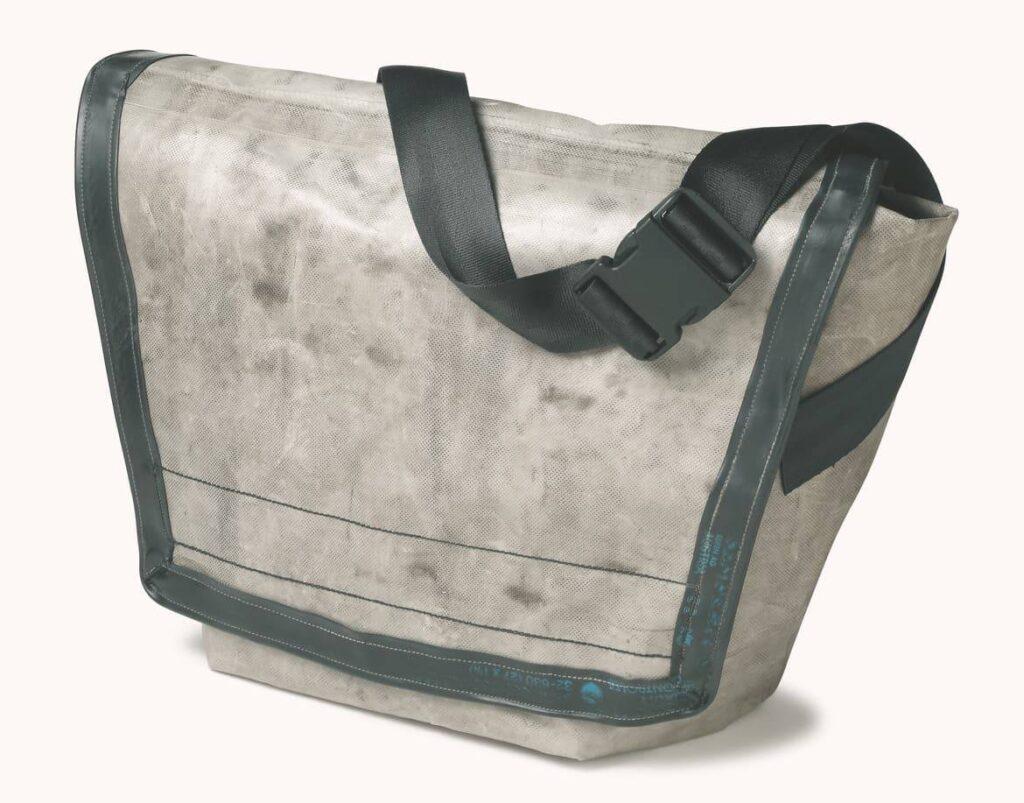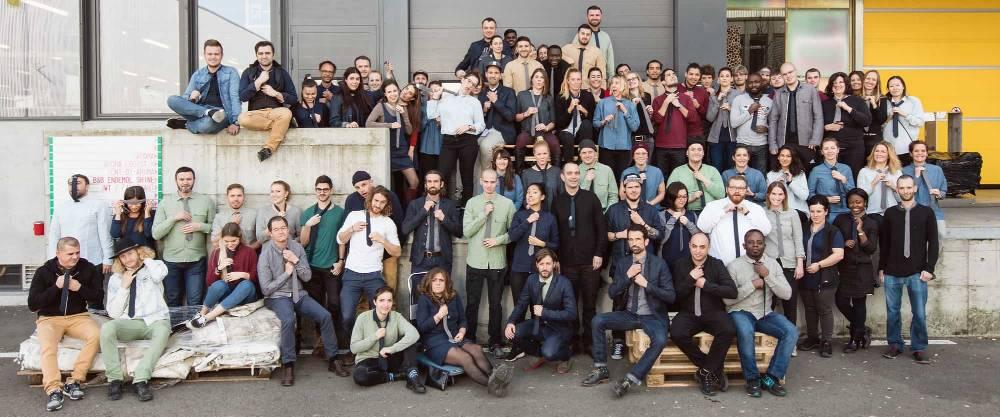Think of Switzerland. And now imagine a situation as different from Switzerland as possible.
Apparently, Zurich in the 1990s was not a nice place to live. A lot of things happened, for those who made them happen in the underground, but on the surface the city was gray and too busy dealing with serious social problems to offer its citizens opportunities for recreation.
At the time, the Freitag brothers rented a mold-eaten apartment with a dull view of the ring road that cuts the city in two. As recounted in the blog section of their website, they moved around by bike. Since they worked as graphic designers, they needed a spacious, ergonomic and waterproof bag to carry their drawings in a protected environment (laptops and Illustrator still belonged to a distant future).
One gray morning (I like to think of it this way), looking out the window Markus saw a resistant and flexible material passing under his eyes. Struck by an intuition, he managed to recover the old tarpaulin of a truck. Since there were no bags made from this heavy waxed fabric (yet), he decided to design and saw one for himself. Imagine dragging about twenty square meters of tarp, heavy and filthy, into a two-room apartment. His brother Daniel went immediately along with Markus’ idea, as it were the most sensible thing to do. For weeks, the tarpaulin occupied every surface of the apartment: it got washed in the bathtub and spread on the ground to be cut. After a careful study of shape and accessories, the model was perfected with the addition of waste materials such as punctured inner tubes from bikes and old seat belts.

The first collection of messenger bags was born and sold-out to Markus and Daniel’ friends during a legendary launch party organized under a railway bridge, in a setting that would later become the epitome of coolness.
The rest is history. 25 years later, Freitag bags are a design object exhibited at the MoMA in New York, and an iconic product that has created a community of aficionados spread all over the world. They have remained unique pieces made entirely by hand using recycled material.
The world created by the Freitag brothers is a virtuous example of circular economy. Let’s have a closer look starting from their key words.
After-Sales Support Service
A Freitag is forever. Which explains why their accessories are practically unavailable in the second-hand circuit. They are not products that satisfy an impulsive buy, even because their price reflects the costs of local production in full respect of the workers. Those who decide to buy a Freitag piece study all the graphics and choose the one that screams “adopt me”, since each piece is unique, inimitable, and irreplaceable. And then they establish a close relationship with the object.
When a bag is too worn or damaged, it can be sent to a special department where patient artisans dedicate themselves to its restoration by welding tarpaulins, filling holes with paint, sewing corners, and replacing edges, Velcro closures, shoulder straps or buckles. I find it very romantic, as well as environmentally friendly.
Word of Mouth
Have you ever seen an advertisement for a Freitag product? Of course not, they do not exist! Endorsement and testimonials are the way to go when you are not simply selling a product, but a lifestyle. The founding brothers define their accessories an “anti-statement” that embraces the needs of different age groups.
When it comes to marketing, Daniel states: “We try not to think in terms of target groups or reference groups; it is a question of convincing ourselves and others of the validity of the solutions we create”.
Every detail of the bags has already lived a first life, the second is the one that the customer offer by purchasing it. Their ideal customer is a person looking for a high-level handcrafted object that incorporates the value of recovery and reuse, and that gets even better with age.
Overwall View
At Freitag, sustainability is not limited to products, but it extends to the entire production chain, right up to sales. One example of this philosophy is their flagship store in Zurich, housed in a tower of stacked containers.
The factory was created in a former slaughterhouse, converted in a way to ensure a minimal energy impact: the green roof thermally insulates the warehouse and collects rainwater which is stored in tanks under the building, heated with the energy produced by waste disposal plant and used to wash tarps in giant washing machines.
The mantra of the company, managed by holacracy (a system that does not need a CEO) is: “We think and act in cycles”. The same process transforming waste into a noble material guides all decisions. According to the Freitag brothers, this idea can go even further: “If we adopt better circular concepts already written in the DNA of the product, we can have an overview of the entire life cycle, and we can avoid the problems that someone else has to solve though upcycling”.

Innovation
The latest novelty at Freitag is F-abric, a textile material made with hemp, linen and Modal fibers (obtained from cellulose extracted from beech wood) collected from plants grown on European soil (to narrow the field, within 2500 kilometers from Zurich). A gauntlet drawn towards the textile industry, one of the least ecological in the world. F-abric is a resistant material like the PVC used for bags, but it is completely biodegradable. To facilitate its disposal, the designers have thought of special metal buttons that can be unscrewed and moved from one piece of clothing to another. Daniel explains: “Disassembling a button is a small formative moment in which you gain awareness of the cycles of the fashion system”.
For this reason, the clothing line by Freitag presents minimal-style garments that can be worn all year round, do not follow trends and consequently we will never find on sale.
Another small revolution in progress.








